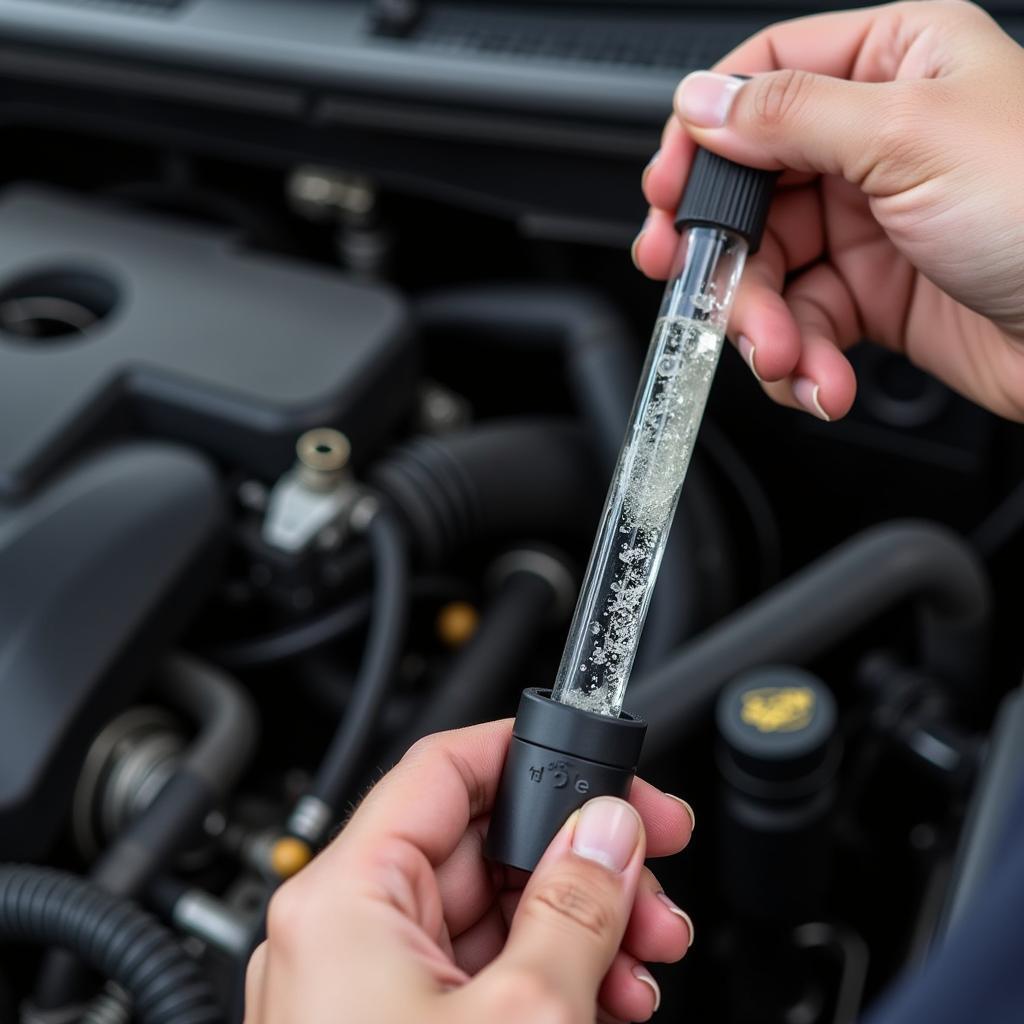A flooded engine can be a nightmare for any car owner. Whether it’s due to heavy rain, a flash flood, or accidentally driving through deep water, knowing How Do You Fix A Flooded Car Engine is crucial. This guide provides a comprehensive, step-by-step approach to help you assess the damage, take the necessary precautions, and potentially save your engine from costly repairs. Acting quickly and methodically can make all the difference.
 Flooded Car Engine Damage
Flooded Car Engine Damage
Assessing the Damage: First Steps After the Flood
Before attempting any repairs, disconnect the car’s battery to prevent electrical shocks and further damage to the electrical system. Next, check the water level. If the water reached the dashboard, the damage is likely extensive and may require professional help. Fixing flooded car situations can be complex. If the water level is lower, you might be able to salvage the engine by following these steps.
 Checking Car Engine Flood Level
Checking Car Engine Flood Level
How to Fix a Flooded Car Engine: A Step-by-Step Guide
-
Drain the Fluids: Remove all contaminated fluids, including engine oil, transmission fluid, power steering fluid, brake fluid, and coolant. The presence of water in these fluids will significantly compromise their effectiveness and can lead to further damage.
-
Dry the Spark Plugs and Ignition System: Remove the spark plugs and crank the engine a few times to expel any remaining water in the cylinders. Clean and dry the spark plugs thoroughly, or replace them if necessary. Inspect the ignition system, including the distributor, wires, and coil, for any signs of water damage. Car fixing short in wiring system issues are common after flooding.
-
Clean the Air Filter and Intake System: Remove and replace the air filter. Inspect the air intake system for debris and water. Clean and dry the intake manifold thoroughly.
-
Flush the Engine: Use a flushing agent specifically designed for flooded engines. This will help remove any remaining water and contaminants. After flushing, refill with fresh oil.
-
Check the Fuel System: Water in the fuel tank can cause significant problems. Drain the fuel tank and replace the fuel filter. Fixing flooded car often involves addressing fuel system contamination.
-
Inspect Electrical Components: Thoroughly inspect all electrical components, including wiring harnesses, connectors, and sensors. Corrosion can occur quickly after water exposure. The cost to fix car door wiring, for example, can increase significantly if corrosion is left untreated. You may need to how to fix corrosion on car body parts.
-
Test the Engine: After completing these steps, attempt to start the engine. If the engine starts, let it run for a while to allow any remaining moisture to evaporate.
Can You Handle it Yourself?
While these steps outline the basic process, fixing a flooded car engine can be a complex and challenging undertaking, especially if you’re not mechanically inclined. Can you fix a salvage car yourself? Perhaps, but a flooded engine is a different beast. Often, it’s best to seek professional assistance from a qualified mechanic. They have the expertise, tools, and experience to properly assess the damage and perform the necessary repairs.
“Water damage can be deceptive. What may seem like a minor issue can quickly escalate into a major repair if not addressed correctly,” warns John Miller, a seasoned automotive technician with over 20 years of experience.
Conclusion: Taking the Right Steps After a Flood
Knowing how do you fix a flooded car engine can potentially save you thousands of dollars in repairs. By acting quickly, assessing the damage, and following the steps outlined above, you can increase the chances of salvaging your engine. However, remember that professional help is often the best course of action, especially in cases of significant flooding. Contact us at AutoTipPro for assistance at +1 (641) 206-8880. Our office is located at 500 N St Mary’s St, San Antonio, TX 78205, United States.
“Prevention is always better than cure. Avoid driving through flooded areas whenever possible. A few minutes detour can save you a lot of headaches down the road,” adds Miller.






Leave a Reply